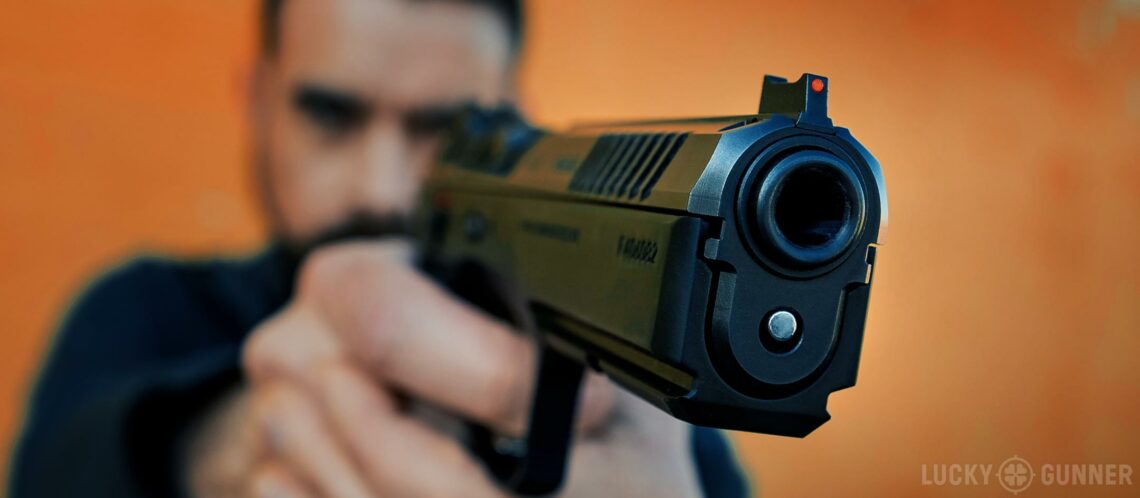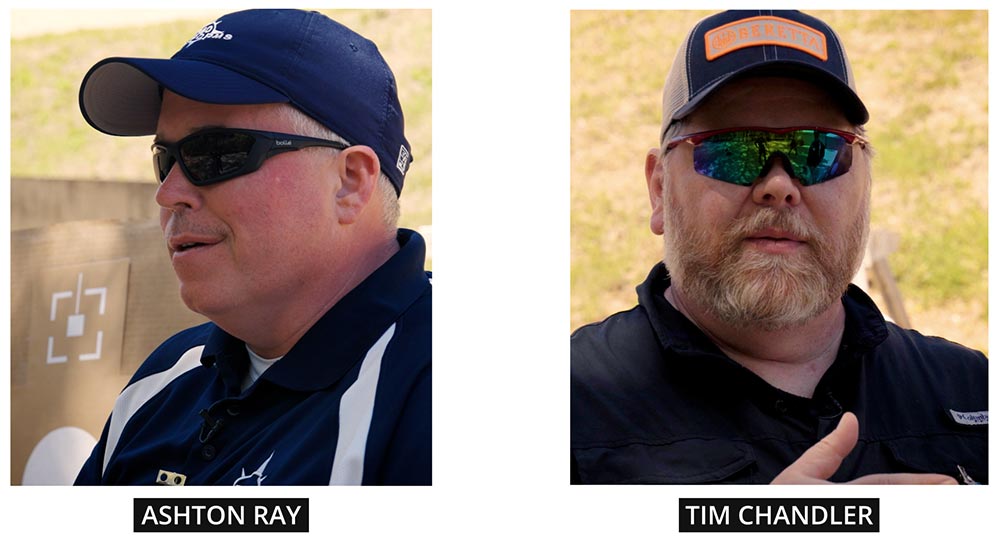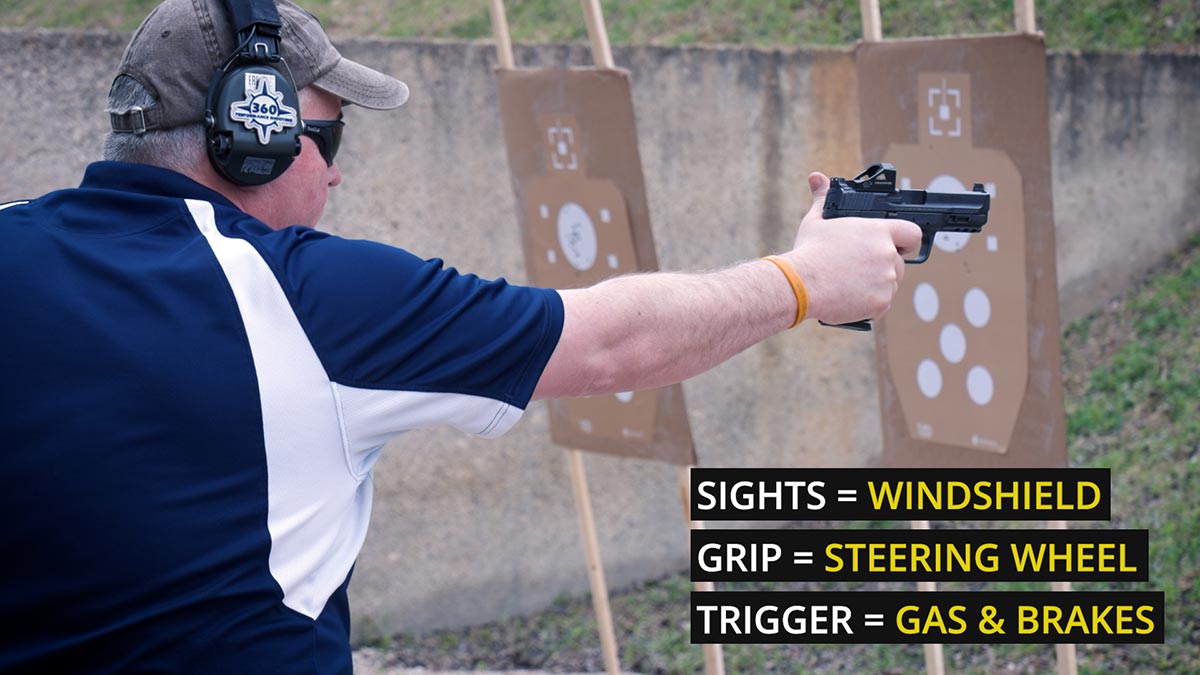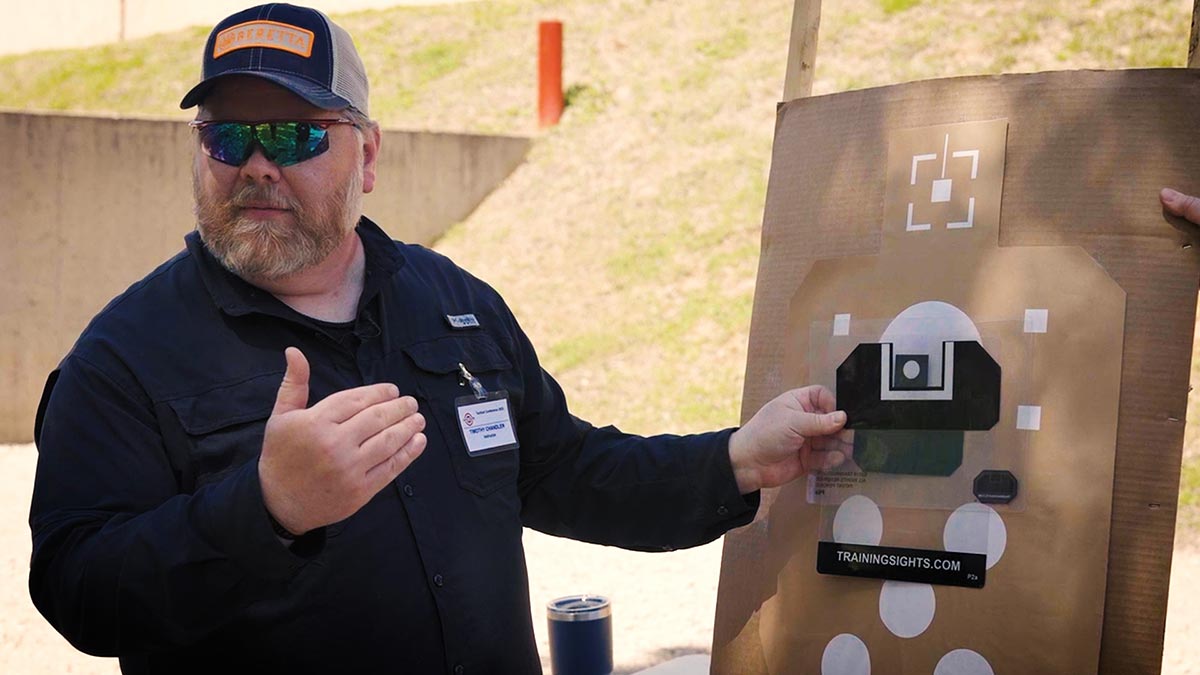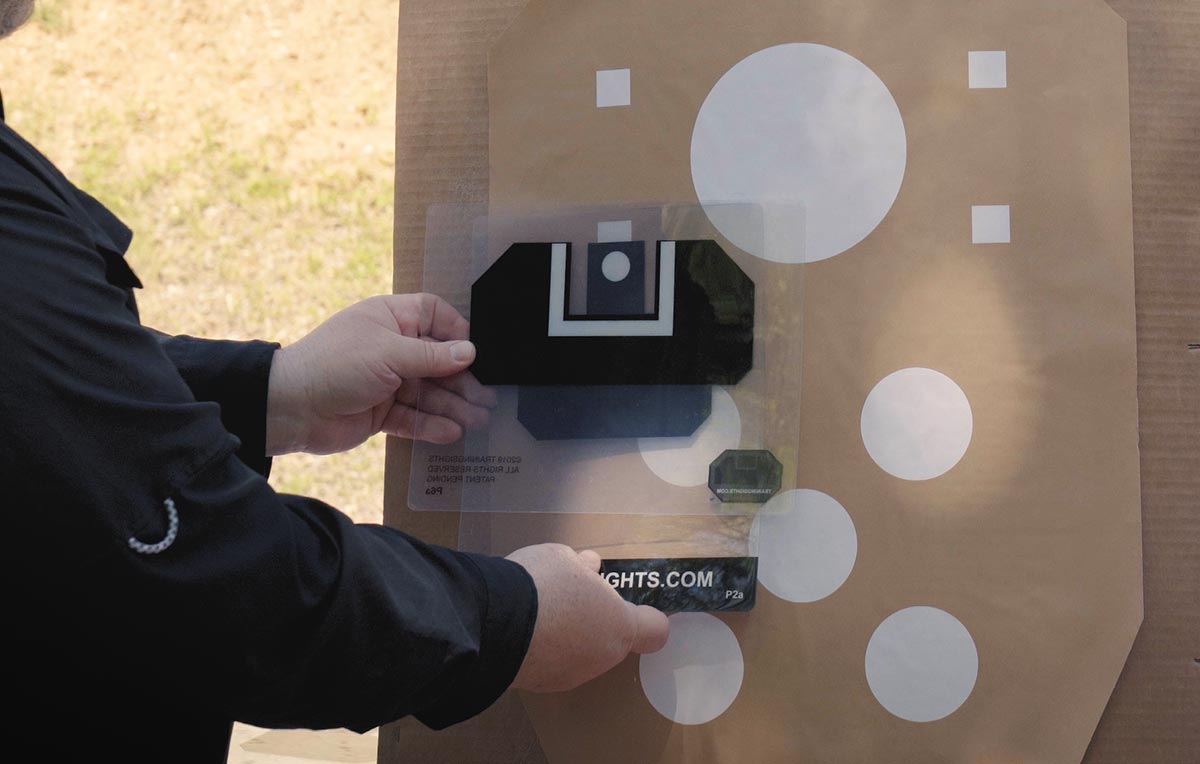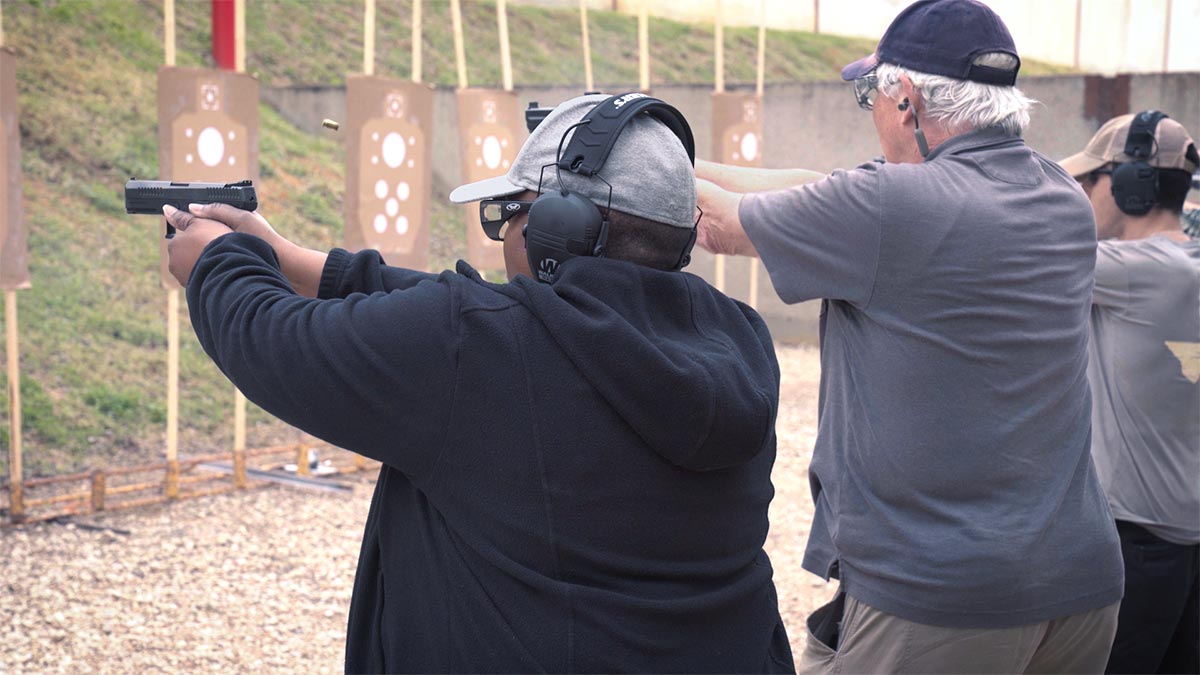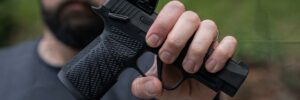A few months ago, I had a conversation with Tim Chandler about some new ideas he and Ashton Ray were trying out in their pistol classes. Some of it sounded like new and better ways to explain old concepts. And some of it sounded just plain new, at least to me. I was intrigued and that conversation eventually led to the video below where Ashton and Tim explain their approach to teaching pistol sights.
Details are in the video, or scroll down to read the transcript.
Hey everybody, I am Chris Baker from LuckyGunner.com. Sometimes you think you understand a concept really well. You’ve heard it explained a thousand times in a hundred different ways. You’ve even successfully taught other people about that concept. But then somebody comes along and offers a slightly different perspective, and it’s like you’re looking at that topic for the very first time.
My friends Ashton Ray and Tim Chandler from 360 Performance Shooting recently had an experience like this. They were training with another instructor and one little side comment he made about how he uses pistol sights just kind of blew their minds. That’s led to some major changes in how they teach the principles of aiming and sight alignment.
I think their approach should be thought-provoking for shooters at any skill level. They’ve got a couple of twists on some familiar ideas that bring clarity where there is often ambiguity. I caught up with Ashton and Tim at the Rangemaster TacCon last month, so I’m going to let them do most of the talking today. This is a super-distilled version of what they’ve been teaching in their pistol classes.
Revisiting Old Cliches
TIM CHANDLER: So we’ve encountered a number of things over the years where people were saying the right things but we didn’t fully understand what they meant.
One of the big ones is, “see what you need to see,” in reference to iron sights. There are a lot of people who struggle with iron sights because they’re told these euphemisms and these vague statements – “See what you need to see,” “equal height, [equal light].” But it isn’t super helpful. It doesn’t really help them have confidence in learning how to use them.
The way it’s taught is that the sights are the primary driver of accuracy on the pistol, but that’s not actually true. Once you get some time on your belt, once you get some experience, you kind of learn it works differently, don’t you?
Sights are the Windshield
ASHTON RAY: Right. The analogy that we like to use is, we talk about driving a car. When you’re driving a car, the sights are your windshield, right? They tell you what exactly it is that’s going on. You look through them? You have the world around you and how you’re trying to interact with it and you look through that windshield and evaluate how well you’re doing with the operation of that vehicle.
If the sights are your windshield, your steering wheel is how you’re mounting the gun with your hands. Now, if you’re driving the car and the car is not going where you want it to go, very few people are going to tell you to “look through the windshield harder.” Because if your sights are telling you that you’re not keeping your car between the lines, you need to fix some things underneath that windshield. You need to fix some things about how you’re interacting physically with that gun.
So if you can go with me with this analogy: the sights are your windshield. You have the steering wheel, that’s how you grip the gun, how you mount the gun. And then the trigger is going to be your accelerator and your brakes.
Unpacking “See What You Need to See”
TIM: “See what you need to see.” right? Anybody who has done any level of firearms training, you’ve heard somebody talk about “see what you need to see” with iron sights.
But, you know, I spent God knows how many years – every time I heard that, I wanted to throw something hard at the ground because I don’t know what that means. Because all of our vision is different. And the fact that there’s somebody out there who has lots and lots of experience and they’ve sort of developed this “snatch the pebble from my hand” understanding of “see what you need to see” isn’t terribly helpful for your typical person.
So where we come in is taking somebody who’s basically safe and try to help them become proficient. Mastery is an endless quest but we can help you find proficiency. One of the greatest revelations we’ve had is changing how we use sights.
I have a little visual aid — this is a representation of iron sights. And what you’ve been told all your life, if you’ve done formal firearms training, police academy or something, you need to have “equal height, equal light.” Front sight centered. Or you’ve been told you don’t need that, you need to “see what you need to see.” Well, let’s talk about what that means.
Over here, we have a target with a number of different size hit zones. I have this radical theory – and we’ve kind of worked on this after doing a bit of training with Tim Herron. He uses sights completely differently because he didn’t come up through the institutions, he taught himself. And he thought, “why not use the rear sight as your primary cue?” And that, of course, is immediately going to make a lot of you all very, very uncomfortable because you’ve been told, “Focus on the front sight! Focus on the front sight!”
Think about this: I want to see what I want to hit through the rear sight, right? This part here, this void, that’s called the notch. It can also be called a window. What do we do with windows? We look through them! I want to see what I want to hit through my rear sight window. Now this is important – if what I want to hit is bigger than my rear sight window, and my front sight is in that window (albeit imperfectly), I’m still going to hit what I need to hit. That’s all I “need to see.” Because if it ends up anywhere in here, that’s going to end up being a hit inside this target.
ASHTON: Well what about distance? What if the distance is such that that’s not going to work out? Well, it’s really interesting, because what we’re working on is a relative relationship between size and distance. So if the target area is larger than the aperture of the rear sight, that window in the rear sight, this works. If it’s the next smaller size, that’s just about the same size. Guess what? That still works.
If you go to the smallest size, now we need to start using a little bit more refinement and a little more traditional view of those sight picture techniques that we’ve all been taught and talked about. That’s where it becomes a little more important. But whenever it comes to these larger, more forgiving relative target sizes, if it’s bigger than the rear window and the sight is visible, send it.
Sight Picture vs. Sight Movie
ASHTON: Now there’s another aspect of the “see what you need to see” part. Your sighting system is never going to be static. It’s always going to be moving, it’s alive. Gabe White calls it a sight movie, and I agree with him wholeheartedly. If your sighting system — whether it’s a dot or irons makes no dang difference — is moving around within the target area, and is not exiting the target area, press the trigger. Send it.
If it’s moving around without the target area, that means you need to fix it. That means you’re doing something that you need to correct in the steerage section. That means the way you’re mounted, the way you’re standing, all the stuff that goes into the grip and mount of the gun needs to be refined such that it stops. You arrest that movement, you keep it inside your prescribed aiming area, then you can send it.
How is This Relevant?
TIM: Here’s where the benefit is for your typical defensive shooter. If your typical defensive shooter just takes the rear sight and you drive the top of the rear sight to about armpit level, what’s inside your rear sight window now? We call that…
ASHTON: The soup kitchen.
TIM: Because that’s where all the good stuff is, right? And if our front sight is somewhere inside that window, what are we going to be hitting? We’re going to be hitting the areas of a threat that are most important to stopping them from doing whatever awful thing it is that’s causing us to have to shoot in the first place. We don’t need to spend a bunch of time staring at the sights, hoping that the answer to life’s problems appear.
What we’re really trying to do is just get enough on our sights. That’s where, “See what you need to see.” comes in. That’s really what it means. All I need is a reference that’s good enough to call whether or not I can send it, or I need to fix it.
And the smaller the target is, or appears in this relative reference of the sight window, the more of a focus I need on my front sight. I don’t need a hard front sight focus to do that at five yards.
ASHTON: Not at all.
TIM: Really, if you just grip the gun properly and get the gun in front of your face, and you get something like that, guess what? You’re gonna hit what you need to hit.
ASHTON: And, critically speaking, most of the shooting errors we see have little to do with sighting and much more to do with changing the grip before/during the trigger press. That’s what moves the sights off the target, that’s where your “low-left” comes from. That’s where the mistakes are usually made. It’s not made with the visual reference of looking through the windshield, it’s made with the physical interaction — that man/machine interface between the grip of the gun and the hands.
TIM: But the sights, because we’re visually oriented creatures, the sights are the only part of shooting that we can see. And so that’s where our brain and our focus wants to be. We want to focus on the part we can see. But — and I’m gonna say something that will sound slightly controversial but stick with me — the sights are the least important part of firing an accurate shot. I didn’t say they’re unimportant, I said they’re the least important. Just like your windshield is not what drives your car, these are a passive reflection of what you’re doing with the real controls. The real controls being your steering wheel and your pedals.
ASHTON: So when you’re working with your gun, when you’re dry firing or live firing, one of the most important things you can do is gather the information that your sighting system is giving you.
We’re talking about iron sights today but dots are absolutely the same. Dots, they scream at you. They’re a big neon billboard and they are shouting at you. Your iron sights are talking too, but they whisper. And you really have to pay attention.
But if you watch what those sights are doing while you are setting up and then executing through your trigger press and making that shot, they will tell you how successful you’re being in dry fire. And that translates directly to live fire. The problem is, most people are only looking for holes in the target. They’re not paying attention and taking this information back on how well they’re doing with mounting the gun, maintaining their grip and breaking that shot effectively.
A huge thanks to Ashton and Tim for sharing that with us. If you want to train with them in person you can find their upcoming classes at 360 Performance Shooting. And of course, the next time you need ammo be sure to get it from us with lightning fast shipping at LuckyGunner.com.
